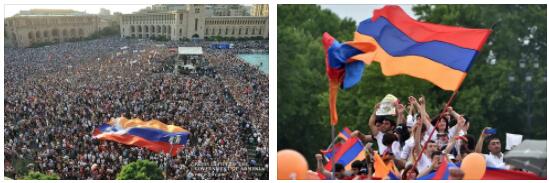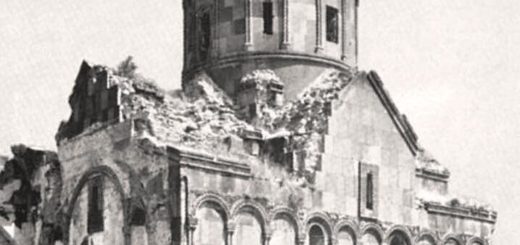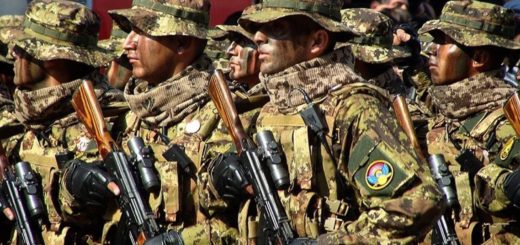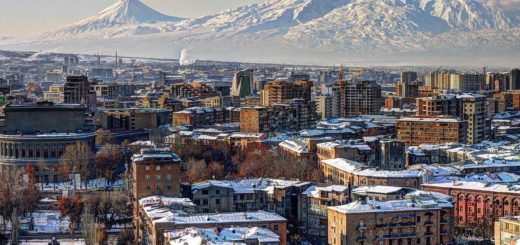State Structure and Political System of Armenia
Armenia is a democratic state. The Constitution of 1995 is in force. In 1995, the Law on a new administrative division was adopted, according to which 11 regions (marzes) managed by governors were created. Large cities: Yerevan, Gyumri, Echmiadzin, Kafan, Hrazdan, etc.
The basic principles of state administration are reflected in the Declaration “On the Independence of Armenia” (August 23, 1990). The highest legislative body – the National Assembly – was elected in May 2003. The highest executive and administrative body is the government of the Republic of Armenia. Check equzhou for political system of Armenia.
The head of state is the president, elected in February 2003, he became R. Kocharyan. The head of the supreme body of executive power is Andronik Margaryan, the head of the legislative body is Artur Baghdasaryan. The President of Armenia is elected for a term of 5 years. Every inhabitant of the country of 35 years of age who has been a citizen of Armenia for the last 10 years and has been permanently residing in Armenia for the last 10 years, as well as having the right to vote, can become one. The same person cannot be elected to the office of President more than 2 times in a row. Presidential elections are held on the basis of an absolute majority system (to win, you need to get 50% of the votes + 1 vote). Candidates for the presidency can be nominated by political parties, citizens by way of civil initiative.
The President of Armenia represents the state in international relations, carries out general leadership of foreign policy, concludes international treaties, and signs international treaties ratified by the Parliament.
The President is the Commander-in-Chief of the Armed Forces and appoints their senior command staff.
The resignation of the president is accepted by the parliament by a simple majority of votes from the total number of deputies. The President is not politically responsible. He can be removed from office only for high treason or other serious crime.
Legislative power in Armenia is exercised by a unicameral parliament. Every person of 25 years of age may be elected as a Member of Parliament. At the same time, a number of qualifications apply: for the last 5 years, you must be a citizen of Armenia, as well as permanently reside in Armenia for the last 5 years and have an active suffrage. Candidates for deputies on the list are recognized as nominated if from 10,000 to 12,000 voters have signed for their nomination. A candidate for deputy under the majoritarian electoral system is recognized as nominated if from 900 to 700 voters have signed for his nomination. A feature of the organization of the parliament is the presence within it of various committees, commissions, organizations. The right of legislative initiative in Parliament belongs to deputies and the government.
The prime minister is the head of the government, the powers of the government are established by the Constitution and laws, and the structure and procedures are established by presidential decree on the proposal of the prime minister. Check homeagerly for democracy and human rights of Armenia.
In May 2002, elections to the National Assembly were held in Armenia. The Republican Party of Armenia (RPA) won 22% of the vote, the opposition bloc of political forces “Justice” – 15.6%, followed by the parties “Country of Law”, “Dashnaktsutyun”, “National Unity”, the Liberal Democratic Union of Armenia The rest gained 5% of the vote. In total, there are about 50 parties in Armenia.
The leading organizations of entrepreneurs are the Union of Industrialists, the Union of Businessmen, the Union of Rural Owners.
Public organizations – trade unions, the Association of Political Scientists of Armenia, the Russian-Armenian Community, the Union of Armenians of Russia, the Armenian Sociological Association, etc.
The prerequisite for the formation of an independent internal policy of Armenia was the independence and the creation of a multi-party system, the formation of opposition forces. The most massive movement was the Armenian National Movement (ANM).
The main factor that helped the national forces to exert a predominant influence on the population of the country, come to power and achieve the independence of Armenia,
was the Karabakh conflict, initiated by the Karabakh Committee, demanding the unification of the Nagorno-Karabakh Autonomous Region (NKAR) with Armenia.
On June 15, 1988, the Supreme Council of Armenia decided to give consent to the entry of the NKAO into Armenia. The Supreme Council of Azerbaijan opposed it. Thus began the Karabakh massacre. Warming up the hysteria of the Armenians, “Karabakh” became the spokesman for the national aspirations of their majority. The new Supreme Council determined a number of main directions of the policy of the new leadership of the country (L. Ter-Petrosyan became the chairman of the parliament, V. Manukyan became vice-premier): the introduction of a national currency, the creation of a national bank, and the pursuit of an independent foreign policy.
A further development of the internal political situation in the country was the intensification of the political struggle between the authorities and the opposition, which included the main political organizations of the country (except for the ANM), by 1994 there were more than 70 of them. A split in the leadership of the ANM and the formation of the National Democratic Union (NDU) were a surprise. After the cease-fire in 1994 between the Karabakh and Azerbaijani troops and the start of negotiations, the Karabakh problem moved aside. The opposition (VAT) moved the criticism of the government in a different direction – accusing leaders and officials of bribery, corruption, personal enrichment.
On February 12, after failing to reach a compromise with the VAT, the president appointed a new prime minister, a supporter of radical economic reforms. But this did not smooth out the contradictions between the government and the opposition, whose criticism spread to the economic situation in Armenia. After the collapse of the USSR, Armenia suffered more than all the republics – economic ties with the countries of the former USSR were disrupted, a blockade was introduced by Azerbaijan and Georgia, railway communication with Russia was stopped, the 1988 earthquake caused great damage, there was an influx of refugees from Azerbaijan, an energy crisis, etc.
In 1994, the president by his decree banned the activities of the Dashnaktsutyun party due to the creation of the Dro organization with a military structure in this party. Since then, a confrontation began between the leadership of Armenia and the Armenian Revolutionary Federation “Dashnaktsutyun” (ARFD). Criticism of the president from the opposition increased after he agreed with the proposal of the co-chairs of the Minsk Group (Russia, USA and France) on a phased version of the settlement of the Karabakh problem. This was considered defeatism, not ensuring the national self-determination of the Armenians of Nagorno-Karabakh. February 3, 1998 L. Ter-Petrosyan announced his resignation.
The duties of the President were entrusted to R. Kocharyan. The first thing he did was to legalize the ARF. March 30, 1999 Kocharyan was elected president. Changes in the power structures of Armenia did not affect its relations with the Russian Federation. In 1997, the parliaments of the two countries ratified the agreement on the Russian military base in Armenia, and in the same year an agreement on friendship, cooperation and mutual assistance was signed between the Russian Federation and Armenia. In addition, a number of documents were signed expanding ties in the economic, legal and cultural fields. Of particular importance was the Agreement between the Russian “Gazprom” and the Ministry of Energy of Armenia on the establishment of “ArmRosgazprom” for the purpose of supplying natural gas to Armenia, its transit through Armenia to Turkey and other countries.
The main principle of Armenia’s foreign policy is complementarism, i.e. maintaining a balance of the country’s relations with East and West. The general line of Armenia’s foreign policy did not provide for broad integration into those projects that are being developed in the CIS. Armenia is cautious about the CIS Customs Union and the creation of free trade zones. But the policy in the West is quite clearly defined. Armenia is an official participant in almost all EU strategic initiatives, hoping to become its full member. Having signed an agreement with NATO on participation in the Partnership for Peace program in 1995, Armenia advocated the development of relations with NATO. Armenia took part in NATO exercises “Cooperative Best Effort 2002” in Georgia. In 2003 such an exercise took place in Armenia. In 2002, Armenia received the status of an associate member of the NATO Government Assembly. Since 2000, negotiations have been underway to restore military cooperation with the United States, for which the latter allocate between 4 and 7 million dollars to Armenia for military programs. In order to avoid friction between the Russian Federation and Armenia, the latter managed to persuade Russia to take part in the Cooperative Best Effort-2003 military exercise on the territory of Armenia. The Russian-Armenian agreements within NATO were preceded by the signing of the Rome Declaration between Russia and NATO. This served as the basis for the tolerant attitude of the Russian Federation towards Armenia’s steps towards rapprochement with NATO.
Armenia is also developing ties with other countries, especially with Greece. An agreement on military cooperation was signed with Bulgaria, Romania, Syria, Egypt in case of aggravation of relations with Turkey. There are 60,000 servicemen in the Armed Forces, incl. 1400 people in the Ministry of Defense and the General Staff; 300 thousand reservists, 330 heavy weapons, 225 artillery weapons, 6 combat aircraft, 22 helicopters (1997). In addition to the army, there are troops of the Ministry of Internal Affairs in Armenia, they include 4 battalions numbering about 1000 people.
In 1995, an agreement was signed between Armenia and the Russian Federation on the establishment of a Russian military base in Armenia (for a period of 25 years) with its subsequent extension. 4,300 military personnel, 74 tanks, 158 infantry fighting vehicles, 84 rocket launchers and 4 squadrons of MiG-23 aircraft are stationed at the base.
On May 15, 1992, Armenia signed the Tashkent Collective Security Treaty between the members of the CIS. On February 10, 1995, Armenia joined the agreement between the CIS countries on the creation of a unified air defense. The Russian Units Control Group and a motorized rifle regiment are located in Yerevan. The Armenian side does not charge for hosting the Russian military base. Armenia pays 75% of the costs associated with the presence of Russian troops. Since 1992, an agreement has been in force on the status of border troops and the joint protection of the external borders of the CIS.
The Armenian-Russian cooperation in the field of training military personnel is fruitfully carried out. The United States is also showing interest in establishing cooperation with Armenia – Armenian servicemen go to study in this country. The desire to involve Armenia in closer cooperation is also shown by the leadership of NATO. However, Armenia is guided by the Russian Federation in ensuring its security. Armenia has had diplomatic relations with the Russian Federation since April 4, 1992.



